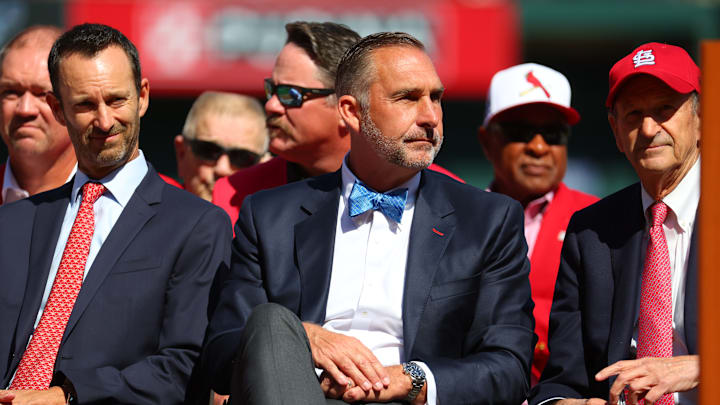#1 - They lost their "edge"
The number one issue that led to the St. Louis Cardinals' demise over the last number of years sums up all of the other issues I addressed and anything else you could name in one statement - they've lost their edge.
Once the pinnacle of pitching development, they lost their edge there.
A front office you never wanted to trade with because you were afraid they'd turn your under-the-radar player into a star, they lost their edge there.
An ownership group that used to be willing to swing a trade for Giancarlo Stanton or hand out huge contracts to David Price and Jason Heyward, they've lost their edge there.
A club that, no matter how the season was going, you were afraid of going on a crazy run and knocking off any team, they've lost their edge there.
The Cardinals are no longer "that team", the one with the edge on everyone else, the one that every other team wants to emulate. They no longer have that kind of edge.
Instead, the Cardinals are now the organization that is behind the times. They are the ones chasing trends that teams have already set. They are the organization that needs to innovate and revolutionize what they do. Complacency, pride, just being obvious, whatever the reason is, the organization has allowed the "Cardinal Way" to grow stale, and now they desperately need major changes in order to get back to being the club that everyone despises for how they always seem to get the edge.
Ownership is not going anywhere, but it will require some mindset shifts from that group in order for real change to happen. John Mozeliak has been open for a number of years now about how it can be difficult for someone to be in his seat for this long to not have their voice grow stale, and I don't think he's just talking about his front office group and the moves they make. Part of Mozeliak's job is to work hand in hand with the ownership group, and it may take a new voice in his seat for ownership to change some of their ways.
Chaim Bloom is not confirmed to be the heir to John Mozeliak by any means, but it would make perfect sense. Bloom was someone that both Mozeliak and Bill DeWitt Jr. wanted to bring in this offseason as an advisor to give the organization a fresh set of eyes, but I think Bloom coming in specifically is for much bigger reasons than just temporary advice.
Bloom became a prominent front-office figure during his time with the Tampa Bay Rays and received a ton of credit for shaping their player development system. The Rays have been able to manufacture a contending team for years now on one of the lowest payrolls in baseball, and Bloom's influence played a large role in that.
Bloom then took over as the head of baseball operations in Boston, and while he was let go at the end of the 2023 season, he did bring Boston to an ALCS and help overhaul their farm system. It's no surprise that their pitching has been really good this year and they have a plethora of top prospects who will be joining the club in the next few years.
If you could hand-pick a candidate to fill Mozeliak's shoes and usher in a new era of Cardinals baseball, Bloom would be on that list, and probably the very top of it. St. Louis needs an outsider to come in and shake things up. Bloom's role as an advisor right now helps him get eyes on the organization and make subtle shifts now, but he'll come in as someone whose entire baseball career has been with other organizations.
It's hard to imagine a scenario where Bloom does not step into Mozeliak's position, but even if he doesn't, I would imagine that the Cardinals' job would be highly sought after. I know things have gone poorly the lat few years, but it still remains one of the most prestigious roles in baseball.
Assuming the Cardinals need to make a managerial change, there'll be plenty of high quality options available to them. Skip Schumaker will be available following the season, and current Red Sox manager Alex Cora has been a rumored name as well. Maybe the club goes and gets Terry Francona after passing on him for Mike Matheny after Tony La Russa retired. Perhaps they go the Yadier Molina, Albert Pujols, or Matt Holliday route. It would be really hard to go wrong with the options that will be at their disposal.
If the Cardinals make shifts sooner rather than later, I think we could see a pretty quick retool over the next few years. Rather than this being the beginning of a long-term rebuild, we could see a sneaky competitive team in 2025, and then watch this Cardinals' club jump back into true contention in 2026 and beyond.
While all of that is possible, it will require them to learn from the mistakes that led to their fall from greatness. And it remains to be seen if that will happen.
